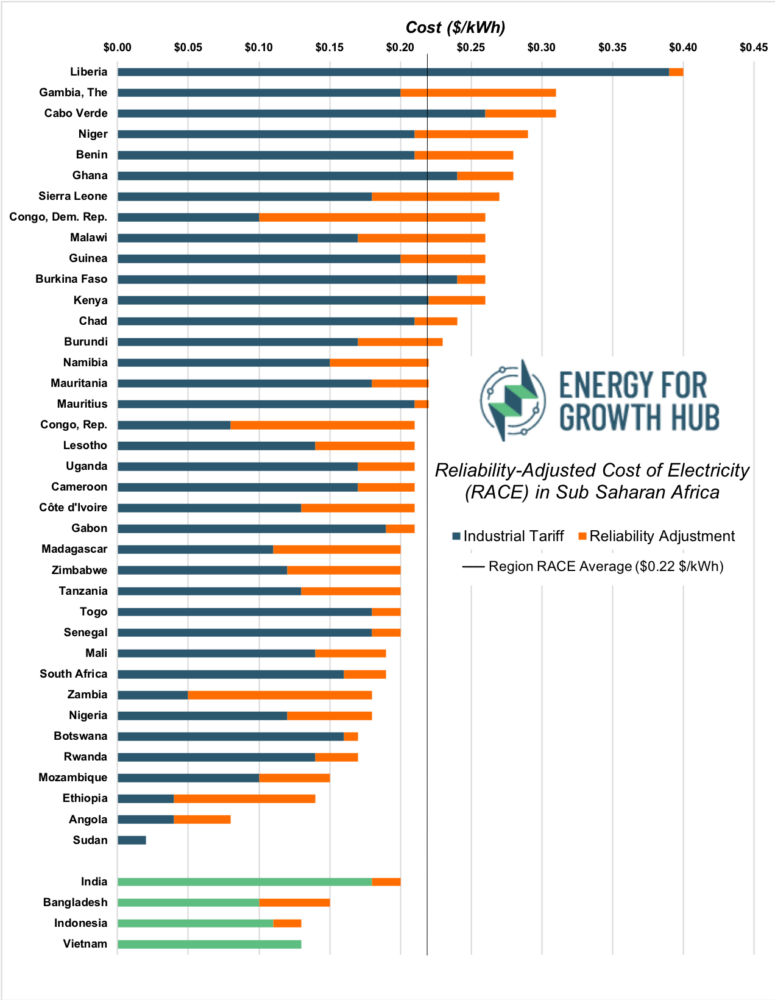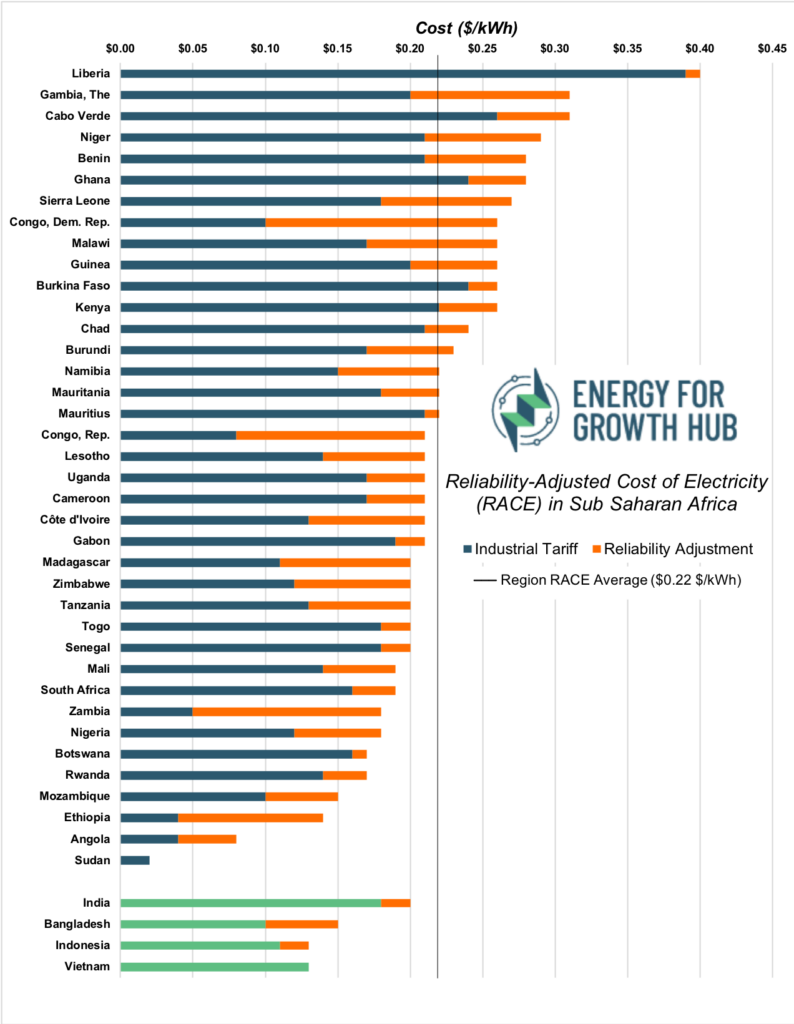
New database release: RACE measures how unreliability drives true power costs
Last fall, the Energy for Growth Hub proposed a new metric, reliability-adjusted cost of electricity or RACE, to…

Reliability-Adjusted Cost of Electricity (RACE) is a new indicator to capture the effective cost paid by firms for 24/7 power.
The electricity access rate – the principal way progress against energy poverty is tracked – does not address the primary concerns of businesses: cost and reliability.
Ideally, comparing what firms in different countries pay for grid power should provide insight into economic competitiveness. But in countries where electricity is unreliable, businesses shoulder huge additional costs to secure the backup power (usually diesel generators) they need during outages.
We need a better way to understand the true economic costs of unreliable electricity.
Electricity is a major cost for most businesses. The additional cost of backup generation can be substantial for firms that are energy intensive (e.g., manufacturing) or require stable 24/7 power (e.g., IT). This represents a major barrier to entrepreneurship, business growth, and global competitiveness.
A Hub working group proposes the creation of a new metric, the Reliability-Adjusted Cost of Electricity.
RACE estimates the true cost faced by private firms for reliable electricity by taking industrial tariffs for grid power and adding the additional cost of backup generation, weighted for how often grid power is unavailable. RACE can be used to:
If firms are expected to create jobs and raise productivity, comparable metrics are needed for the true cost of power.

Reliability-Adjusted Cost of Electricity for sub-Saharan African countries.